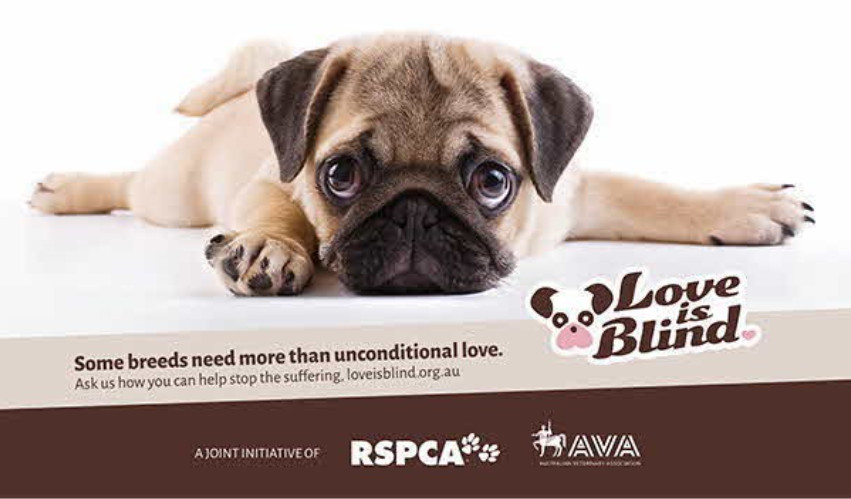
Animals with exaggerated physical features, like brachycephalic or flat-faced dogs, have loving personalities and form strong bonds with their owners. However, there are some serious health and welfare problems associated with their conformation due to breeding practices. Some brachycephalic breeds including the British Bulldog, French Bulldog, Pug and Boston Terrier have a shortened and kinked tail, called a “screw tail”. The screw tail is a result of abnormalities causing there to be fewer bones in the spine (so that the tail is shortened) and angular fusion of some of the bones in the tail (so that it curls or kinks).
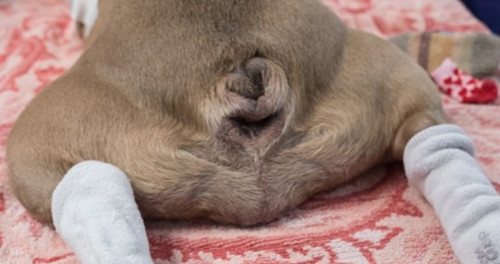
These dogs have an inherited genetic problem that causes the abnormalities of the bones in the spine (vertebral bodies) as well as the tail. The gene which causes these spinal abnormalities (also known as vertebral body abnormalities) and the screw tail has been identified in French and British Bulldogs and Boston Terriers [1]. In these breeds, and even in breeds where the genetic link has not yet been fully established, the spinal abnormalities resulting in the screw tail are highly heritable, meaning that if the parents are affected, the offspring are very likely to be affected.
Brachycephalic dogs with screw tails have a high likelihood of having other deformities along the length of their spine, although these vary in number, location, and severity [1–3]. In a study in 2017, it was found that 93.5% of French Bulldogs had spinal deformities [4].
Abnormalities or deformities are likely to lead to spinal problems including compression of the spinal cord, formation of cysts within the spine and also diseases of the discs between the spinal bones. Not all dogs with spinal deformities develop spinal problems, but when these problems do occur the dogs may become paralysed in their back legs and can also develop faecal and urinary incontinence.
Other problems associated with deformed spines include dermatitis associated with the skin folds around the screw tail and the screw tail partially obstructing the anus [5]. Screw tail dogs may need their owners to help clean around this area after defecating to avoid infections from faecal build up, especially where there are skin folds. Sometimes medications may need to be given in conjunction with regular cleaning to avoid the risk of skin infections. In more severe cases, partial or complete tail amputation may be required.
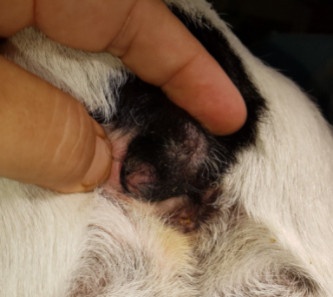

How is it possible to check for abnormal spines?
There are currently two main techniques that can be used to check for abnormal spines.
Firstly, in British and French Bulldogs and Boston Terriers there is a specific genetic test for the inherited genetic problem that causes the screw tail deformities [4, 6]. This is a blood test and can be easily done by your veterinarian. This test is 100% accurate for the affected genes and affected animals must not be used for breeding [6].
Secondly, in all breeds abnormal spines can be detected by imaging [6, 7]. Computed Tomography (CT scan) is the most accurate way of assessing the spine, but high-quality plain radiographs (x-ray) may also be used in some animals. CT and x-ray are used to look at the shape and structure of each vertebra (spinal bone) to determine if it is normal. In brachycephalic breeds, such as the Pug, for which there is not currently a genetic test available, spinal imaging should be used to assess for the presence of spinal abnormalities. Dogs with any spinal abnormalities must not be used for breeding [6].


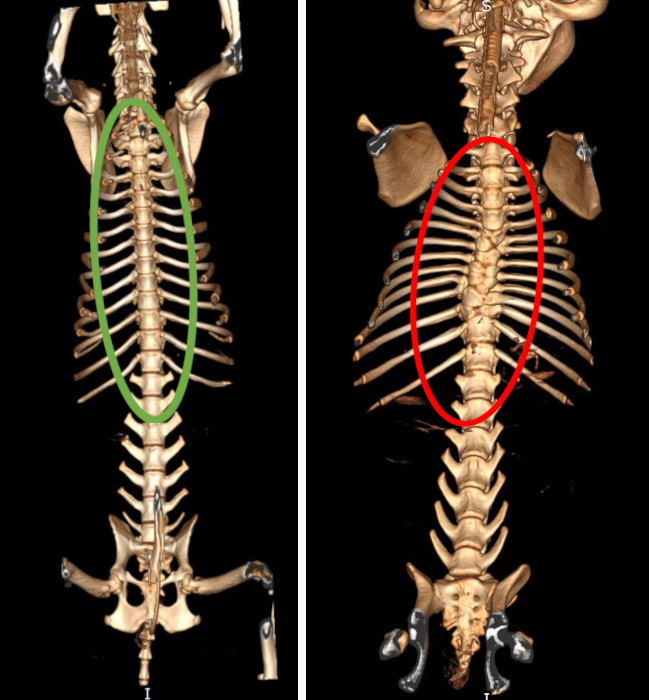
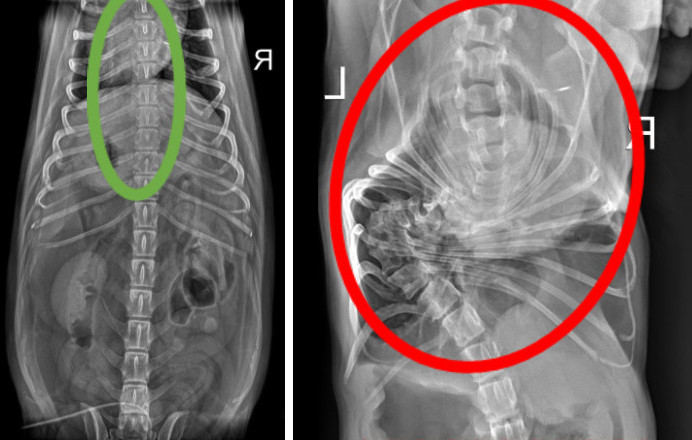
The screw tail seen in so many brachycephalic dogs is not a quirky feature but rather a serious abnormality which can lead to pain, distress and suffering of these special animals. Selecting and breeding dogs without a screw tail will dramatically improve both the dogs’ quality and length of life.
More information
RSPCA Australia and the Australian Veterinary Association are raising awareness to try to change the way purebred dogs are selected and bred in Australia.
If you’re a potential puppy buyer you can help by reading the RSPCA Smart Puppy and Dog Buyer’s Guide and choosing not to buy puppies with exaggerated features that compromise their welfare.
If you already own one of these breeds, speak to your veterinarian about ways to help your much-loved pet live a more comfortable life, and avoid some of the worst consequences of these disorders. Also make sure your dog is desexed, so they do not pass on health problems to the next generation.
For more information or to get involved, visit the following websites: Love is Blind, Australian Veterinary Association. See also: Australian Veterinary Association Brachycephalic dog breeding policy, American College of Veterinary Surgeons, International Cat Care, Universities Federation for Animal Welfare and UPEI Canine Inherited Disorders Database.
Images courtesy of Adjunct Professor Philip Moses – Veterinary Specialist Services, Brisbane, Australia.
References
[1] Mansour TA, Lucot K, Konopelski SE et al (2018) Whole genome variant association across 100 dogs identifies a frame shift mutation in DISHEVELLED 2 which contributes to Robinow-like syndrome in Bulldogs and related screw tail dog breeds. PLoS genetics 14(12): p.e1007850.
[2] Lackmann F et al (2021) Epidemiological study of congenital malformations of the vertebral column in French bulldogs, English bulldogs and Pugs. Veterinary Record, 22 May 2021: e509.
[3] Gutierrez‐Quintana R, De Decker S (2021) Tail end of the brachycephalic problem: diagnostic and treatment options for spinal malformations. In Practice 43(3): 124-134.
[4] Ryan et al (2017) Prevalence of thoracic vertebral malformations in French bulldogs, Pugs and English bulldogs with and without associated neurological deficits. Veterinary Journal 2017 221:25-29
[5] Roses L et al (2018) Surgical management of screw-tail in dogs. Companion Animal 23(5): 287-292.
[6] Australian Veterinary Association (2021) Brachycephalic dog breeding policy. Available online: Brachycephalic dog breeding policy (Accessed 18.2.2022).
[7] Brocal J, De Decker S, José-López R et al (2018). Evaluation of radiography as a screening method for detection and characterisation of congenital vertebral malformations in dogs. Veterinary Record 182(20):573.
